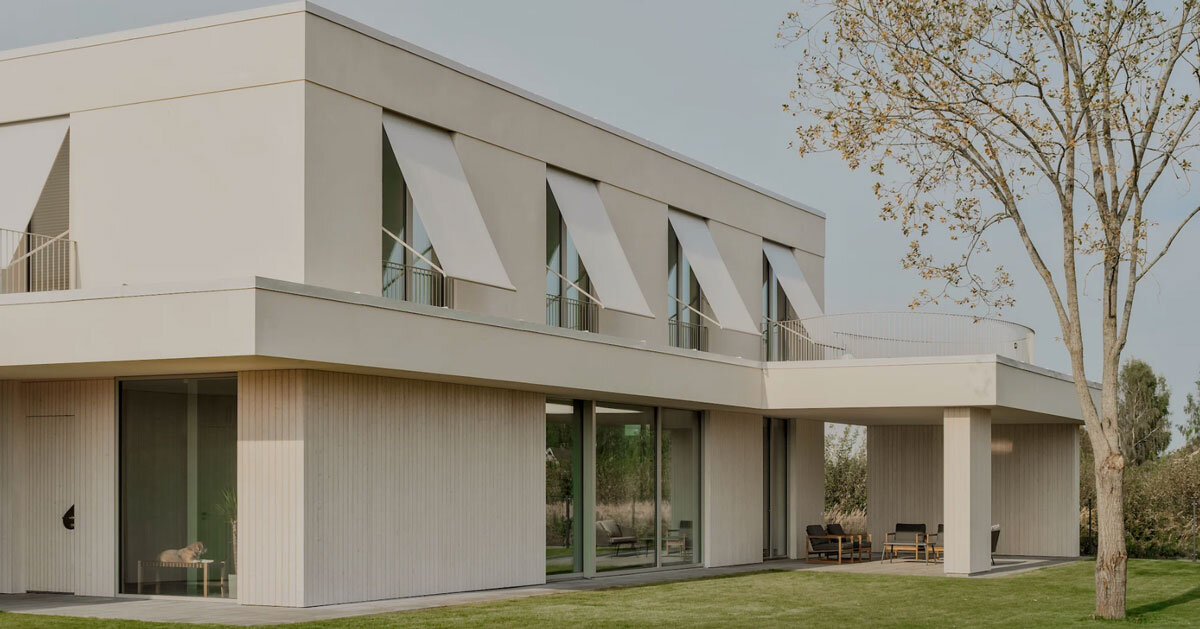The design for Lime and Timber House by GAISS emphasizes a balanced material composition and integration with its natural surroundings in Mārupe, Latvia. The residence is a timber-framed structure with cellulose insulation, finished with lime plaster on both the interior and exterior.
The house is a linear volume with a symmetrical window arrangement and a cubic form, positioned within a birch tree garden. An extended roof structure connects the garage, main house, and garden terrace, creating a cohesive architectural composition. The ground floor facade is clad in timber, while the upper level is rendered in lime plaster. Curved roof terraces and handrails introduce variations in form, defining areas for outdoor use.
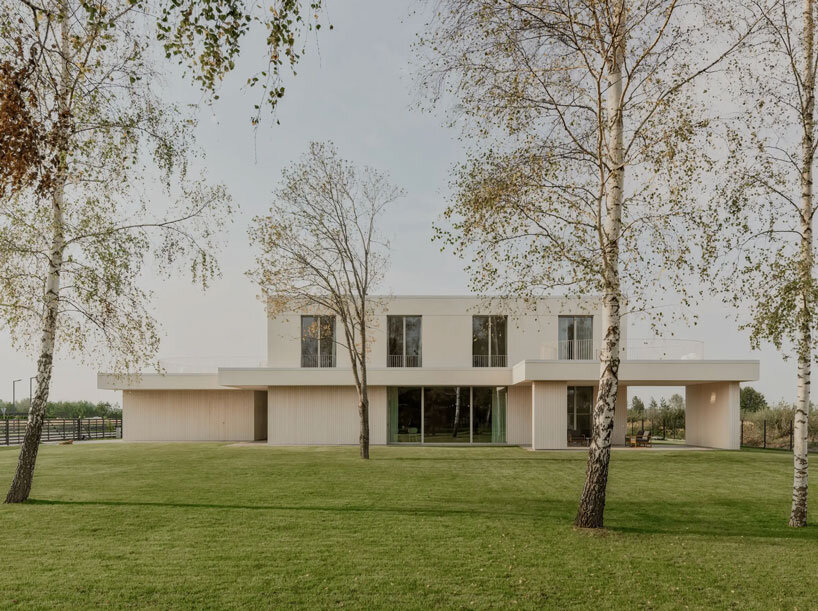
all images by Alvis Rozenbergs
GAISS establishes a cohesive design language throughout
The entrance is located between the garage and the main house, sheltered beneath the extended roof. A large window serves as a visual element in the entry sequence, while the door is clad in facade boards and features a curved steel plate detail at the handle. Inside, a continuous concrete floor extends across the ground level, establishing a unified living space. Floor-to-ceiling openings connect the interior to the garden and terrace. The walls are coated in textured lime plaster in warm tones, contributing to the spatial character.
The design team at GAISS constructs a central staircase from wood, functioning as a connecting element between the two levels. It features solid veneered handrails and steps, culminating in a double-height space with a skylight that allows natural light to filter through to the lower floor.
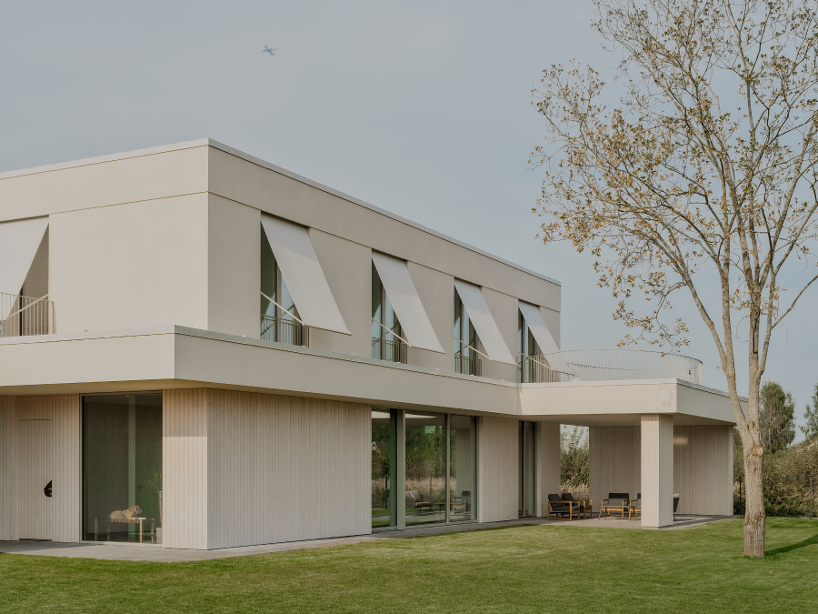
Lime and Timber House integrates natural materials with its surroundings in Mārupe
GAISS’ Lime and Timber House follows energy efficiency strategies
Lime and Timber House’s design by GAISS incorporates energy efficiency strategies. The main volume follows a compact cuboid form, optimizing thermal performance. Unheated service areas, including the garage and terrace, introduce spatial variation while maintaining overall efficiency. The majority of windows face south to maximize solar heat gains, while an overhanging roof on the ground floor and window awnings on the upper level provide shading to regulate indoor temperatures.

a timber-framed structure with cellulose insulation and lime plaster finishes
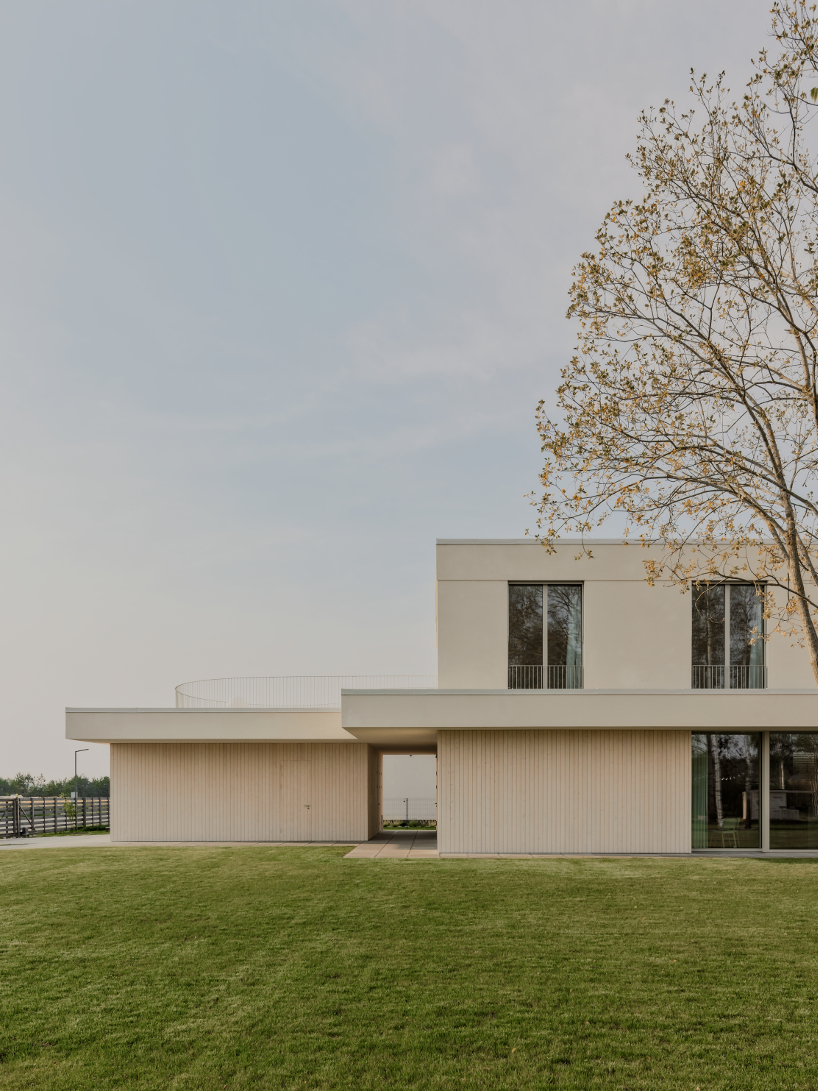
positioned within a birch tree garden, the design emphasizes natural harmony
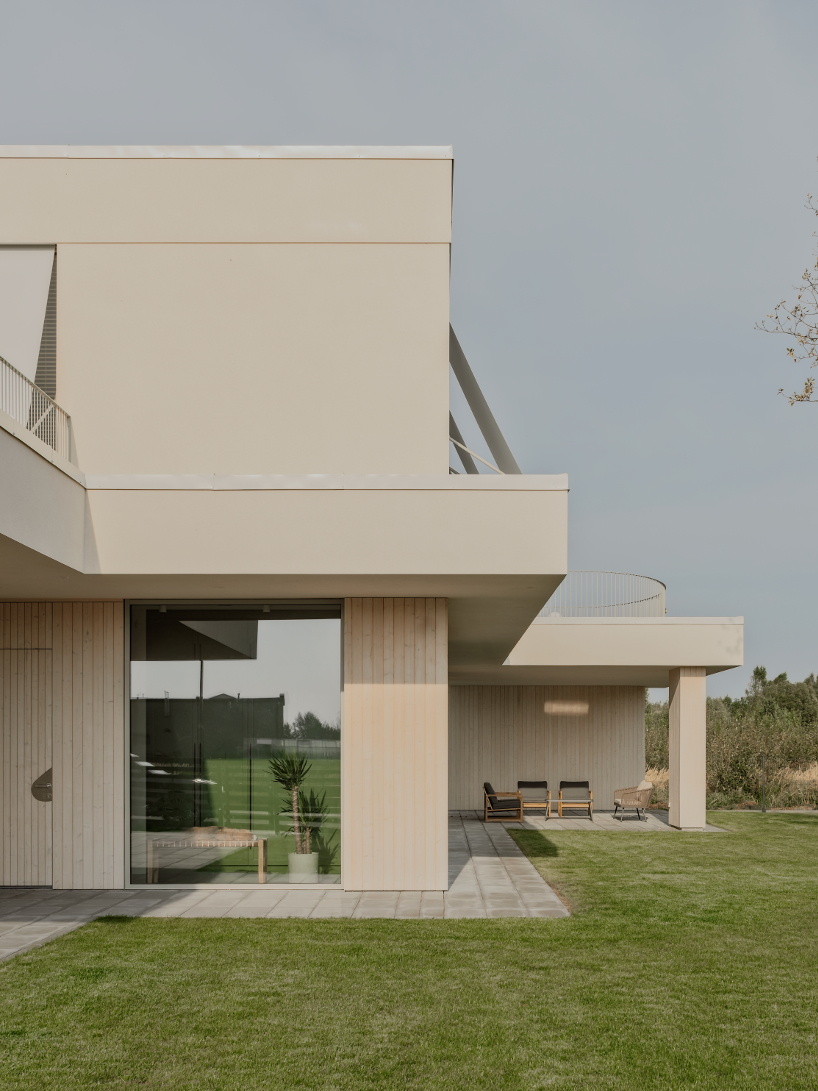
the ground floor facade is clad in timber, contrasting with the lime-plastered upper level
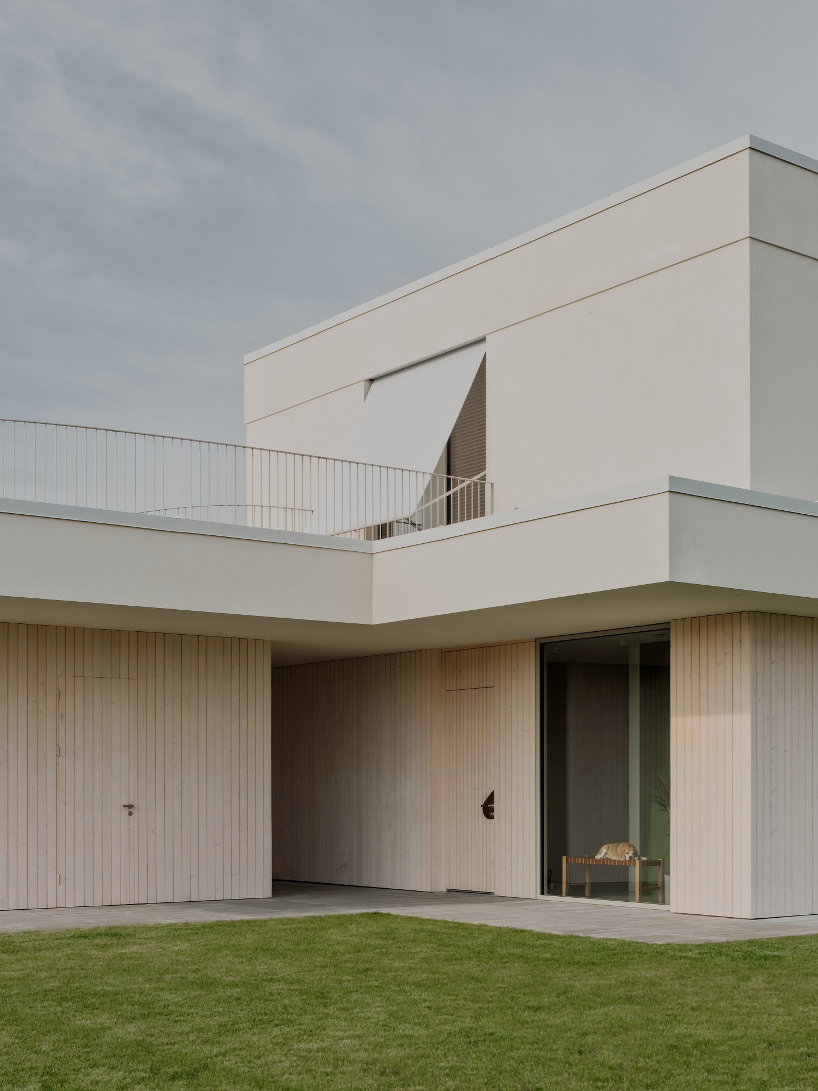
an extended roof structure unifies the garage, main house, and garden terrace

curved roof terraces and handrails introduce subtle variations in form
